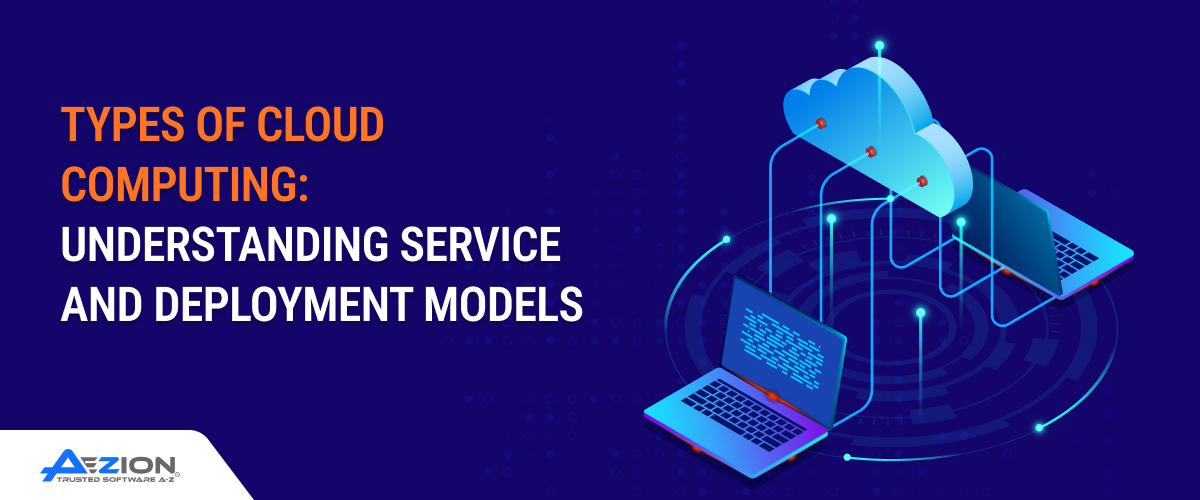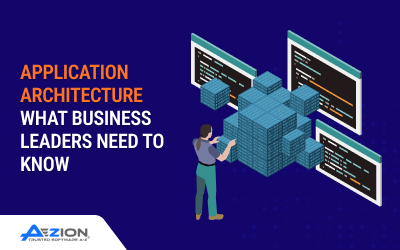Introduction
Cloud computing has revolutionized the way firms create, deploy, and increase online solutions. Rather than putting money into hefty infrastructure, organizations can now take advantage of nimble, on-demand computing resources via the internet.
According to Gartner, over 85% of enterprises are expected to adopt a cloud-first approach by 2025, highlighting the strategic importance of understanding cloud types.
Choosing the correct type of cloud computing, whether based on service models or deployment models, affects cost efficiency, security, compliance, and scalability. For businesses, this is not just a technical decision; it is a strategic choice that influences innovation and competitive advantage.
In this blog, we will go through various types of cloud computing, encompassing service models, deployment models, use cases, benefits, challenges, and emerging trends.
Top Cloud Computing Service Models
Service models determine how companies utilize cloud resources, what they control, and what is regulated by the provider.
1. Infrastructure as a Service (IaaS)
- Offers virtualized computing resources such as servers, storage, and networking without the need for physical hardware.
- Advantages: Scalable, pay-as-you-go, reduces upfront infrastructure costs.
- Examples & Use Cases: AWS EC2, Microsoft Azure; Netflix uses IaaS to scale its streaming infrastructure efficiently.
2. Platform as a Service (PaaS)
- Provides a pre-configured environment for developing, testing, and deploying applications without managing underlying servers.
- Advantages: Simplifies app development, faster time-to-market, reduces operational overhead.
- Examples & Use Cases: Azure App Services, Google App Engine; developers deploy apps globally using PaaS platforms.
3. Software as a Service (SaaS)
- Hosts fully built applications accessible via the internet, eliminating installation and maintenance.
- Advantages: Easy access, automatic updates, subscription-based cost.
- Examples & Use Cases: Salesforce, Microsoft 365; businesses access CRM and productivity tools seamlessly.
4. Function as a Service (FaaS) / Serverless
Executes individual functions on demand, triggered by events, without server management.
- Advantages: Cost-effective, scalable for event-driven workloads.
- Examples & Use Cases: AWS Lambda, Google Cloud Functions; Coca-Cola streamlines vending machine operations with FaaS.
Types of Cloud Deployment Models
Deployment models establish where and how the cloud is hosted, administered, and accessed.
- Public Cloud – Controlled by providers and offered via the internet. Highly scalable and economical.
- Private Cloud – Committed to one business, providing greater control and security. Preferred by regulated industries.
- Hybrid Cloud – Combines public and private clouds, compromising on compliance and scalability.
- Multi-Cloud – Leverages multiple providers to minimize lock-in and improve resilience.
- Distributed Cloud – Places services near users, minimizing latency.
- Community Cloud – Shared by organizations with identical objectives or compliance requirements.
Each has trade-offs, and most businesses use them in a hybrid manner for flexibility and compliance.
Difference: Service Models vs Deployment Models
| Aspect | Service Models | Deployment Models |
| Definition | Determines what resources you consume (IaaS, PaaS, SaaS, FaaS) | Determines where and how services are deployed (public, private, hybrid, etc.) |
| Control | Partial to minimal, depending on the service | Full or shared, depending on deployment |
| Example | SaaS app running on a cloud | Public cloud hosting the SaaS app |
Cloud Computing Use Cases & Examples
Cloud models are transforming industries daily:
- IaaS: Netflix scales up its streaming infrastructure on AWS.
- PaaS: Developers deploy apps worldwide using Google App Engine.
- SaaS: Salesforce delivers CRM without installations.
- FaaS: Coca-Cola streamlines vending machine management using AWS Lambda.
- Public Cloud: Shopify supports high e-commerce traffic on AWS.
- Private Cloud: Healthcare providers develop HIPAA-compliant data systems.
- Hybrid Cloud: Banks strike a balance between private data storage and public analysis.
- Multi-Cloud: Businesses combine AWS, Azure, and Google Cloud for flexibility.
These examples highlight that service and deployment models tend to work hand-in-hand.
Benefits & Challenges of Cloud Computing
Here are some of the benefits of cloud computing:
- Scalability: Scale resources instantly as demand fluctuates.
- Cost Efficiency: Pay-as-you-go minimizes initial investment.
- Agility: Faster development and deployment cycles.
- Global Reach: Cloud providers offer worldwide infrastructure.
- Continuity: Built-in disaster recovery and backup options.
Some challenges that come with cloud computing are:
- Security & Compliance: Data privacy and regulation concerns remain.
- Vendor Lock-In: Dependence on one provider can limit flexibility.
- Latency: Real-time apps need data hosted closer to users.
- Management Complexity: Hybrid/multi-cloud adds governance layers.
- Hidden Costs: Poor optimization can erode savings.
Top Emerging Trends of Cloud Computing
Here are some of the trends of cloud computing:
- Serverless & Event-Driven Models for agile, cost-effective execution.
- Edge & Distributed Cloud reducing latency and enabling IoT.
- Hybrid & Multi-Cloud Growth to prevent lock-in and enhance resilience.
- AI in the Cloud is speeding up analytics and decision-making.
A report shows 75% of enterprises are adopting hybrid and multi-cloud strategies to optimize costs and resilience.
Best Practices for Selecting the Right Model
- Specify business requirements on compliance, scalability, and cost.
- Cost-compare pricing models (public pay-as-you-go vs private investment).
- Cost-consider growth and migration flexibility.
- Craft clear governance and compliance policies.
- Ponder multi-cloud to prevent lock-in.
- Tackle security as a shared responsibility.
Conclusion
The service and deployment models of cloud computing provide multiple routes to scale, secure, and modernize IT operations. Selecting the right combination depends on your business goals—from agility to regulatory compliance.
Ready to define your ideal cloud strategy? Partner with Aezion to implement a tailored solution that maximizes business value.
Frequently Asked Questions:
1) What are the four deployment models of cloud computing?
Public, Private, Hybrid, and Multi-Cloud. Each varies in ownership, scalability, and security.
2) What are the three levels of cloud computing?
The three levels of cloud computing services are IaaS (Infrastructure), PaaS (Platform), and SaaS (Software).
3) What is IaaS, PaaS, and SaaS?
- IaaS (Infrastructure as a Service): Allows companies to rent IT infrastructure (servers, storage, network) on a pay-as-you-go basis.
- PaaS (Platform as a Service): Offers a managed platform to build, test, and run applications without managing infrastructure.
- SaaS (Software as a Service): Delivers pre-built applications via the internet, reducing installation and maintenance.




